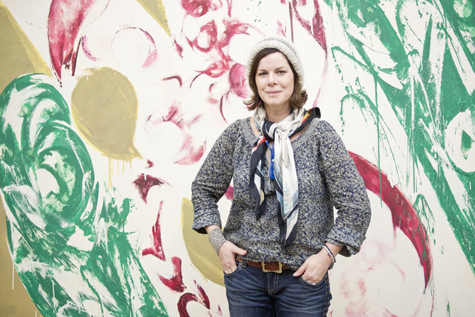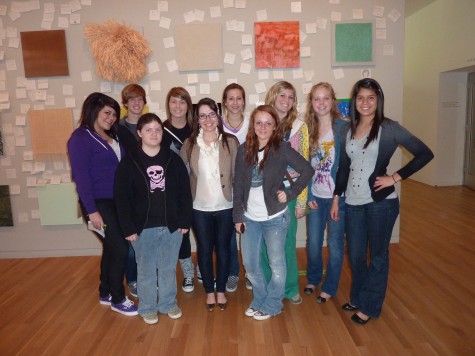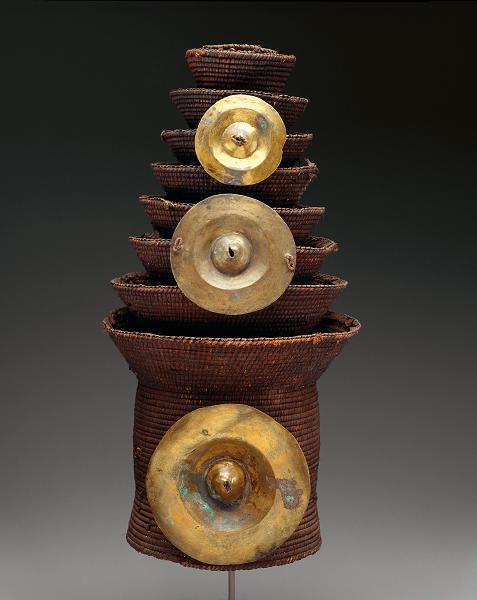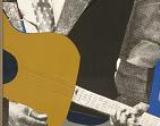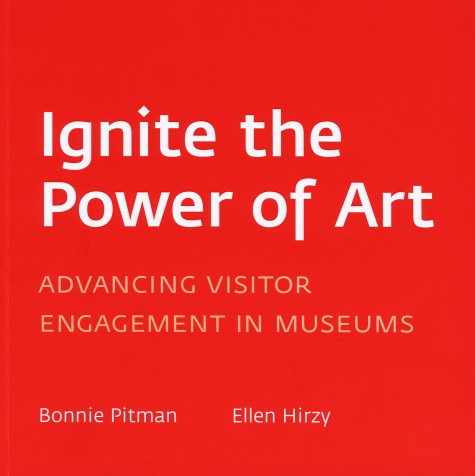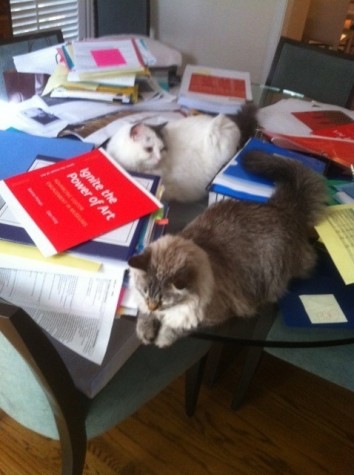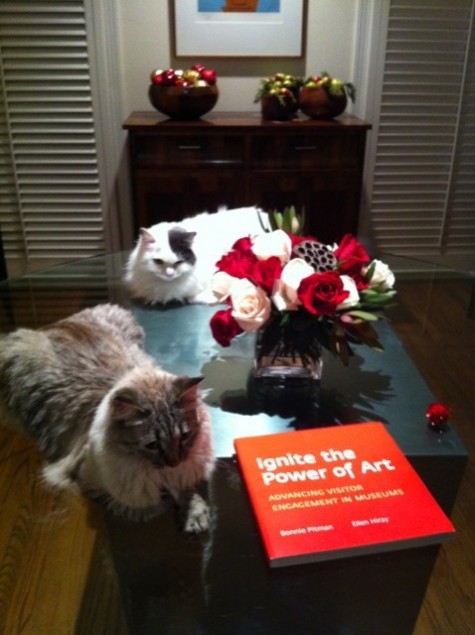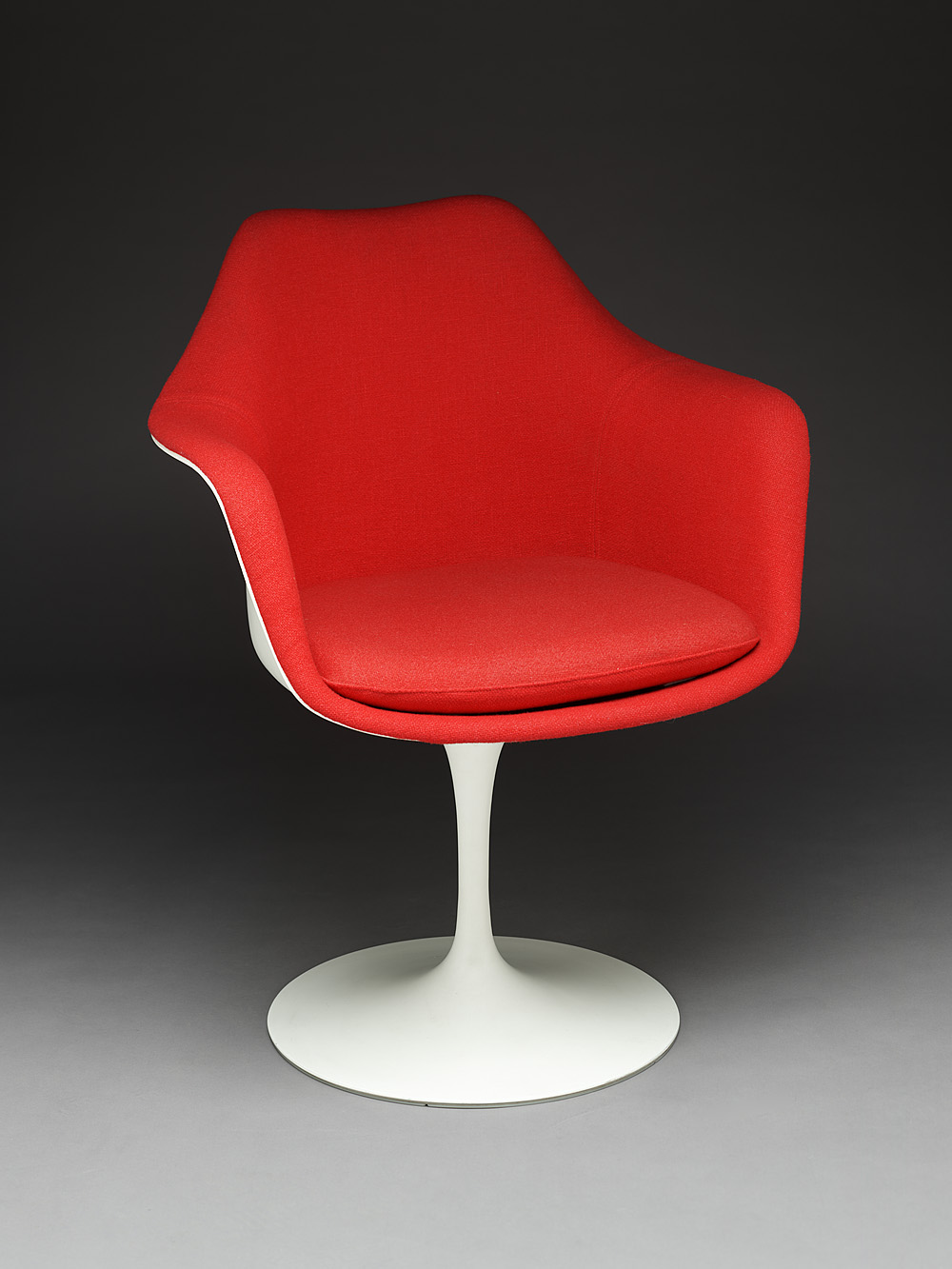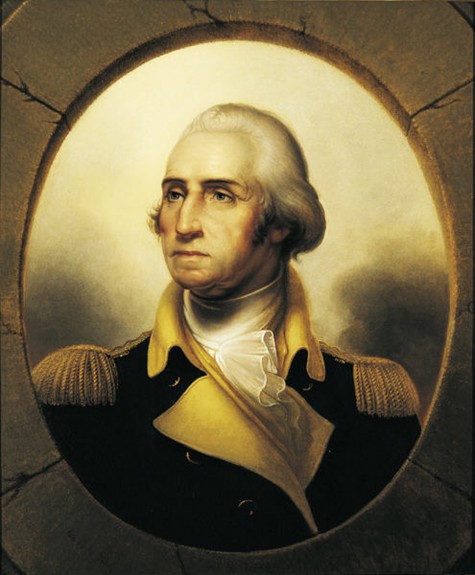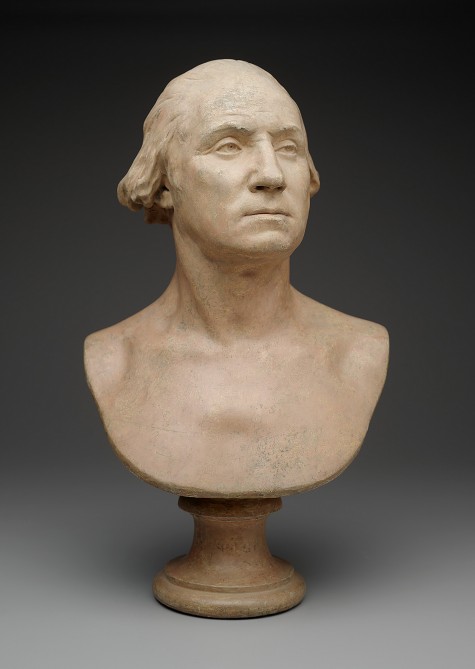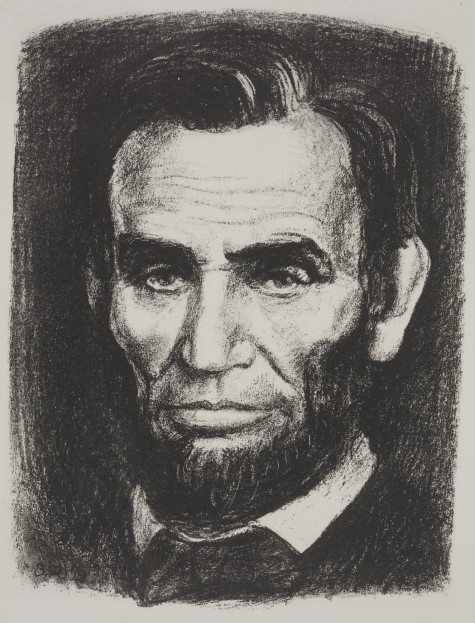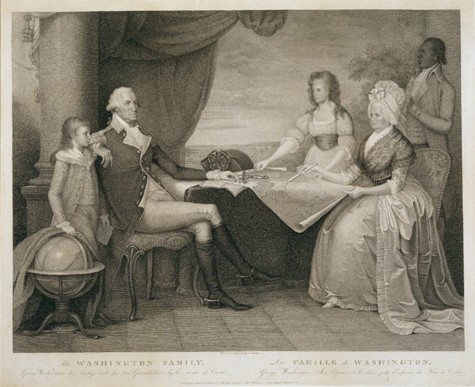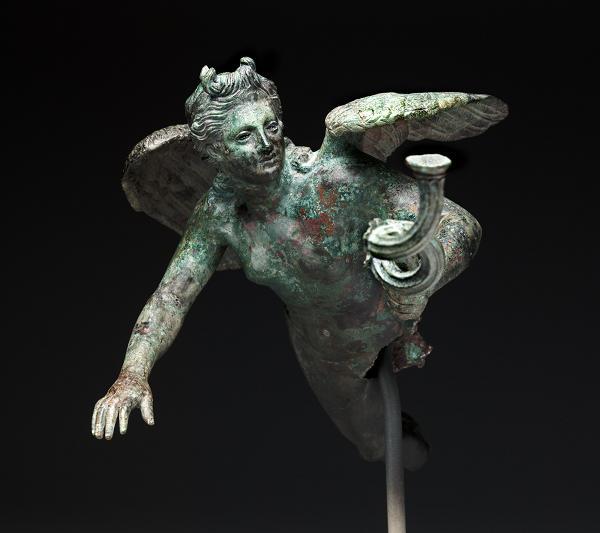The day after the 83rd Annual Academy Awards, Oscar-winner Marcia Gay Harden poses in front of Pollination, the DMA’s magnificent painting by Lee Krasner, the artist Ms. Harden portrayed in the film Pollock and for which she won an Academy Award. In an instance of DMA synchronicity, we captured Ms. Harden after rehearsals for her performance tonight in the Arts & Letters Live program Texas Bound. On March 25, Arts & Letters Live will present an evening with art historian Gail Levin for her new biography on Krasner.
Archive for February, 2011
Our Oscar Moment
Published February 28, 2011 Arts & Letters Live , Behind-the-Scenes 1 CommentTags: Academy Awards, Arts & Letters Live, Dallas Museum of Art, Gail Levin, Lee Krasner, Marcia Gay Harden, Pollock, Texas Bound
All of the fun. None of the cost.
Published February 25, 2011 Late Nights 1 CommentTags: activities in Dallas Texas, becoming a volunteer, charitable activity, create a work of art, Dallas activities, Dallas Museum of Art, exciting Late Night, free admission to Late Night, Late Night, Late Night experience, volunteer together, volunteering
The program Late Nights at the Dallas Museum of Art is full of activities and experiences for people of all ages. But did you know that there’s a way to enjoy them without having to pay Museum admission?
Volunteering at Late Nights isn’t your average charitable activity. Volunteers can choose from a wide array of programs they wish to help with, and they often get to participate. As a volunteer, you become a part of Late Nights on multiple levels as a facilitator, aide, and participant, and you can also explore the Late Night before or after your volunteering shift. You can get in on the action yourself, helping visitors create their own works of art in the Art Studio or encouraging visitors to think outside the box during a Creativity Challenge.
Many volunteers have said that the rewards that come with volunteering at Late Nights make the event more of a fun activity than actual work. Couples and families will volunteer together to participate in Late Nights in a different way, and more often than not, they come back again and again to volunteer. One volunteer put it this way, “I look forward to the beaming faces of the kids when you’ve applauded them for the project they’ve just completed. It’s really sweet to see the parents and children working so closely together. It’s also amazing to see what people can create with simple materials and their imagination.”
Volunteers receive free admission to Late Nights and also have the opportunity to meet up-and-coming or even nationally known artists who lead workshops or host programs. When you volunteer, you get a glimpse into all of the behind-the-scenes work that is involved in creating a fun and exciting Late Night. You’ll be amazed at how much collaboration and effort goes into each one of these events, and being a part of it can give you a great sense of accomplishment.
Volunteering at the Dallas Museum of Art helps you become an integral part of the Late Night experience. After all, where else can you help little ones wiggle into fun yoga poses and then race against the clock to create a work of art under pressure at the Space Bar? So if you’re looking for a unique way to experience the Museum, consider becoming a volunteer. It will provide you with a new perspective on Late Nights at the DMA.
For more information on volunteering, visit our volunteer page or contact Hadly Clark at 214-922-1311 to volunteer for Late Nights.
Friday Photos: Mystery Artwork
Published February 25, 2011 Art & Teaching , Friday Photos , works of art ClosedTags: Mystery artwork
Date: 20th century
Dimensions: Overall: 25 x 10 x 9 3/4 in. (63.5 x 25.4 x 24.76 cm)
Medium: Coiled basketry (palm splints and fiber) and brass discs
Geographic location: Africa, Democratic Republic of the Congo
Culture: Ekonda peoples
Dallas Museum of Art, gift of the Friends of African and African-American Art
1. We were made from mixed media.
2. We were inspired by childhood memories.
3. Our creator was one of the great collage artists of the 20th century.
4.We are two-dimensional.
5. Our facial features resemble African masks.
What’s our name?
Start in collections and begin your search.
Best Wishes,
Karen A. Colbert
Teaching Programs Intern
Elephants, Buffalo, and Giraffes…Oh My!
Published February 24, 2011 Art & Teaching , works of art ClosedTags: Art, Dallas Zoo, teacher, teacher workshop, teachers
Take a moment and imagine an African elephant at the Dallas Zoo. Now imagine an elephant at the Dallas Museum of Art. Were the images of the elephants the same? It would definitely make an interesting story (with a strong potential of damaging artworks) to see a live elephant in the Museum galleries! Although elephants are not allowed in the Museum, images and representations of elephants and other animals by living African cultures are.
On Saturday, January 29, twelve teachers from a variety of disciplines and grade levels joined the DMA and the Dallas Zoo for a full-day teacher workshop. Teachers spent the morning exploring animals from Africa in the DMA exhibition African Masks: The Art of Disguise and in the afternoon engaged with live animals in the Dallas Zoo’s Giants of the Savanna exhibition.
[slideshow]
At the Museum, teachers considered the connections between the animals represented in masks and the living cultures that created the masks in response to their beliefs and surrounding environment. With a focus on antelope, elephants, and buffalo, Museum staff encouraged teachers to think about descriptive words that relate to each, observe the realistic and abstract qualities of the animal masks, and think about the context of each mask in relationship to the ceremonies performed by the different cultures.
The conversation continued at the Dallas Zoo as teachers discussed the location of the African Savanna, the animal habitats within, and the challenges facing animals in the different African countries. Luckily, the weather outside was extraordinary (the workshop occurred the weekend before the snow and ice), and the teachers were able to ride the monorail around the Zoo, participate in elephant observation studies, and feed the giraffes.
By the end of the day, teachers commented on their experiences with looking at patterns on the African masks and on the animals and made connections to the significance of animals within the cultures and countries in Africa.
We all had a great time and are looking forward to another collaborative teacher workshop with the Dallas Zoo soon! This workshop is one example of what the DMA offers to teachers of all grade levels and disciplines. Be sure to check the Teacher Programs website for new workshops later this spring.
Until next time….
Jenny Marvel
Manager of Programs and Resources for Teachers
The Night Owl and the Pussycats: Adventures in Igniting the Power of Art
Published February 23, 2011 Behind-the-Scenes , Center for Creative Connections , Collections , Education , Exhibitions , Installation , Late Nights , Social Media 3 CommentsTags: Bonnie Pitman, Dallas Museum of Art, Ellen Hirzy, Hydra, Ignite the Power of Art, Ignite the Power of Art: Advancing Visitor Engagement in Museums
From the very beginning in February 2009, this exciting book project inspired by the DMA’s director, Bonnie Pitman, was a collaborative effort. And my responsibility was to serve as the publication’s gatekeeper, charged with trafficking the manuscript, compiling and incorporating the numerous edits and comments, and keeping track of all the details and loose ends. There were “those days” when I imagined masses and masses of rapidly proliferating Hydra heads—and, like a metaphorical Hercules, the faster I lopped them off (i.e., completed a task), the faster they seemed to regenerate.
To keep track of all the edits to the digital manuscript, we used the Microsoft Word feature known as Track Changes, where, like a board game, everyone gets a different color. With five or six people making rainbow-colored edits, the manuscript became a vivid, almost psychedelic, dazzle of clashing colors, from bright pink to pale brown. Since large chunks of text were moved around, Word could only track this by keeping the old, lined-out passages on the page, so I found myself on “fast forward” through whole paragraphs on occasion. Then when comments were added to the screen, a running series of squashed balloons of text crowded in along the right-hand margin. Pretty soon we were laughing about eye strain.
Our quest for a perfect set of images became the next challenge. We pored through hundreds of DMA images—sorting, juxtaposing, weighing, and discarding—for each of the 141 photographs finally chosen. So it was definitely an exciting moment when the book went to the printer in early October 2010. As I write this blog two years later, we have distributed the printed copies. While this project “had its moments,” it’s also been enormously rewarding. I’ve learned a lot about data analysis, the design and packaging of information, and the challenges and pitfalls of fact checking. Even at moments of relatively frazzled morale, our spirits were always kept up by the knowledge that we were presenting something new and important. This book was a labor of love for a large group of people, especially for the two authors.
Ending on a light note, Bonnie kept us entertained throughout the editing and production process by sending digital pictures of her two cats, Leda and Perseus. Owing to the late hours she usually keeps, Bonnie was frequently hard at work on this book at one or two o’clock in the morning, seated at her glass work-table, with Leda and Perseus lying on—or playing with—stacks of galleys, photo contact sheets, charts, layouts, and reports—all of which offered the cats an ideal playground. I still have the early photographs showing them stretched out on a hoard of papers and folders. The later pictures depict their puzzlement as the glass tabletop finally resurfaced and the papers receded. And there’s a final shot of the cats sitting wistful, but perhaps also slightly triumphant, on a table cleared of everything but a vase of flowers and a single copy of the printed book. I’m sure Leda and Perseus look forward to a sequel.
Eric Zeidler is Publications Coordinator at the Dallas Museum of Art.
Reader Pick: Love in the DMA's Collection
Published February 22, 2011 works of art ClosedTags: Reader Pick
The time has come to announce the winner of the Reader Pick from February 14. Drum roll please! The work of art with the most votes is The Tulip Chair, by Eero Saarinen. Thank you to all who voted. We hope next time to have even more votes for the reader pick!
Amy Wolf
Coordinator of Gallery Teaching
Seldom Scene: Presidents at the DMA
Published February 21, 2011 Collections 2 CommentsTags: Abraham Lincoln, Boardman Robinson, Edward Savage, George Washington, Jean-Antoine Houdon, Presidents' Day, Rembrandt Peale
Insomniac Tours: A History
Published February 18, 2011 Behind-the-Scenes , Late Nights 1 CommentTags: customized tour, Dallas activities, DMA collection, expansive museum, guided tour, Insomniac Tour, Late Night, personalized museum tour, something to do on a Friday night, tour guide, works of art
Have you ever wondered what happens in the Dallas Museum of Art after the sun goes down? Do the paintings look different at night? Does the Museum have a different feel to it? Well, there’s one way to find out.
Late Nights at the Museum feature a variety of programs and activities, including the Insomniac Tour. The Insomniac Tours started informally in 2004, thanks to our Director, Bonnie Pitman, and her night-owl disposition. When the DMA turned 100 we stayed open for 31 hours, and Bonnie led tours into the wee hours of the morning for anyone who wanted a more personalized Museum tour. With the launch of Late Nights, the tours continued, and their name was coined.
Bonnie is not the only one who gives the Insomniac Tour, although she tries to attend as many Late Nights as possible. Other guest tour guides have included artists Krystal Read and Jim Lambie, DMA curators Heather MacDonald, Roslyn Walker, and Jeffrey Grove, and local art critics such as Christina Rees. When Director of Collections Management Gabriela Truly gives the tour, she talks about the art that’s not displayed, and where it is stored. These different speakers give visitors a chance to learn new things about the works of art through multiple perspectives.
The best part about Insomniac Tours is that no two tours are the same. The tour guide will take a poll every Late Night to see how many people have taken an Insomniac Tour before, and will ask for input on what members of the group want to see. If the group is full of newcomers, the tour guide will give a “best of” tour, highlighting some of the most unique parts of the DMA’s collections. Repeat visitors can get a tour of more obscure works, or focus on a certain exhibition or movement.
Since the DMA is such an expansive museum, it can be intimidating for visitors to know where to begin. Joining an Insomniac Tour allows visitors to receive a customized tour with some of the leading art experts. So check it out the next time you’re looking for something to do on a Friday night, and see how art can come alive after dark!
Join Olivier Meslay, Senior Curator of European and American Art and The Barbara Thomas Lemmon Curator of European Art, when he leads his first Insomniac Tour during the February Late Night.
Friday Photos: Mystery Artwork
Published February 18, 2011 Art & Teaching , Friday Photos , works of art 2 CommentsTags: Mystery artwork
Date: early 1st century B.C.
Dimensions: Height: 22 1/4 in. (56.515 cm)
Medium: Bronze
Dallas Museum of Art, The Eugene and Margaret McDermott Art Fund, Inc., in honor of Anne Bromberg’s 30th anniversary with the Dallas Museum of Art.
Click here to learn more about the Eros lamp holder.
I present to you the second mystery artwork.
Take a closer look and you will see coils of fiber and metal hooked together.
- I increase in size from top to bottom.
- I can only be worn by chiefs.
- I can also be seen with a wavy-edged scepter.
- My name means to sing.
- The presence of metal disks signifies wealth and prestige.
What am I?
You have one week to guess! Click on collections and begin your search. We also invite you to join us tonight as we celebrate our romance-inspired Late Night event.
Best Wishes,
Karen A. Colbert
Teaching Programs Intern
Staff Reading Group Update
Published February 17, 2011 Museum Insight 2 CommentsTags: Diane Ragsdale, educator reading group, Late Night, Museum 2.0, Nina Simon, Surviving the culture change
It’s been a while since we blogged about our Staff Reading Group!
January’s reading group featured several special guests. We were joined by colleagues from the Crow Collection of Asian Art, the Nasher Sculpture Center, and the Rachofsky House for a conversation led by Nina Simon. Nina is an independent experience designer, author of The Participatory Museum, and author of the Museum 2.0 blog which also appears as a column in Museum magazine.
Nina selected our reading: a keynote address from the 2008 Australia Council Arts Marketing Summit, given by US philanthropy expert Diane Ragsdale, and titled: “Surviving the culture change.” Ragsdale’s address (to greatly simplify) challenges arts organizations to adapt and to rethink their audience—what they need (and what they might not know they need), and how we can engage them in order to stay relevant.
The reading was provocative and timely, and led our group to consider behaviors and attitudes of museum visitors and to reflect on our own tendencies as museum-goers. Why is it that we only go to concerts, museums, or the zoo once in a while if we really enjoyed the experience? How can we make museum-going a habit—something we integrate in our lives, like an exercise class? One of the great ideas that came from our session was that we think of going to museums/concerts/etc. like we do going to yoga—an activity that’s regularly on our calendars and prioritized in our lives.
Ragsdale, in suggesting ways arts organizations can change in response to questions like these, shares truly inspiring examples of progressive, visitor-centered programming already in place in museums around the world. Here at the DMA, we are pushing on our own ideas of ways to adapt programs to further visitor involvement. We are currently in the process of refreshing Late Nights with the help of visitor voices and museum-world consultants—Nina, among them. So look for new and exciting things to come!
And in the meantime, check out Nina’s blog to read more about great programs and experiences happening in museums.
Amy Copeland
Coordinator of Go van Gogh Outreach
